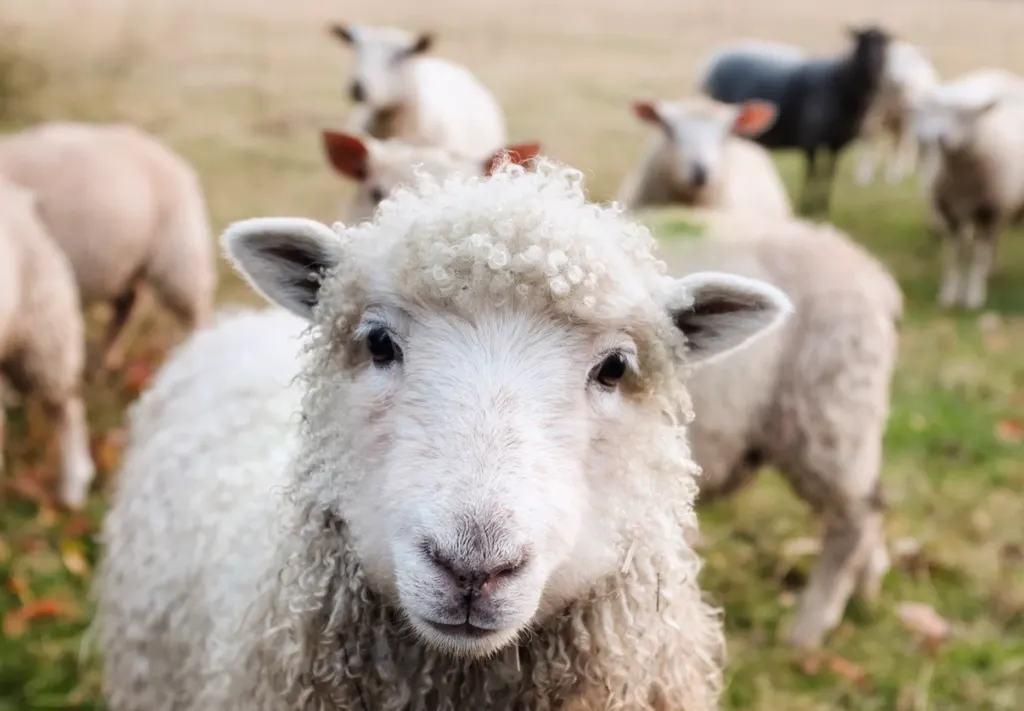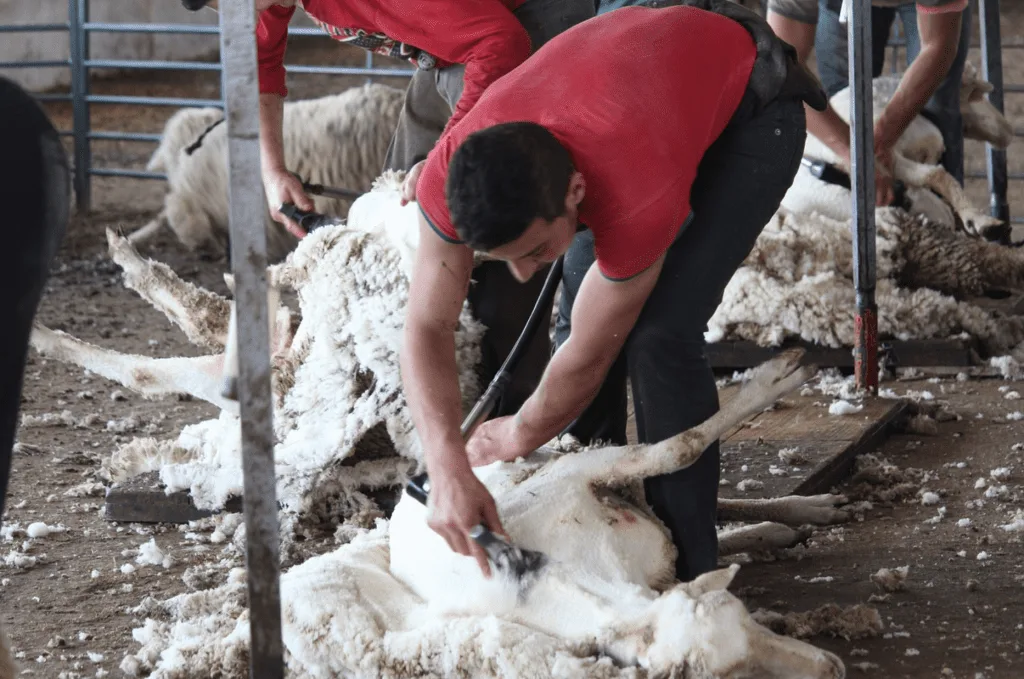Up to 50% Clearance Clothing & Footwear + Extra 25% Off REI Outlet.

Maybe you read our post about down and are wondering where wool comes into the equation. Maybe you can’t figure out for the life of you why vegans forgo putting wool socks on their feet (here is our list of substitutes). Maybe you’re looking for some evidence of what you know in your heart is an ugly industry. Or maybe you have three drawerfuls of wool outdoor wear in your closet and are just wondering why the heck some vegan outdoor writer thinks you shouldn’t buy any more of the stuff. Whatever your reason for reading this post, the message is the same: Say no to wool. Here’s why you shouldn’t use wool.
A Bit About the Industry
People have been making clothing and accessories out of wool for centuries, probably longer. Farmers would herd their sheep into the barn, line them up, and carefully give them a summer haircut. They’d spin all that oily fluff into yarn and thread and, voila! a wool shirt, blanket or scarf.
But that’s not how it happens anymore. Wool is harvested on a factory scale which has a negative effect on the well-being on the animals involved. And while sheep aren’t killed for the material they produce like cows are for leather, they do suffer, feel pain and don’t have the ability to defend themselves and they need people who do to stand up for them.
People like me. And maybe you.
So here are some facts about sheep and the wool industry (Obviously small family farms treat their animals better, but they are not supplying wool for most of the jackets, flannels shirts, and baselayers at your local outdoor store):
- Sheep weren’t meant to be sheared. A wild sheep’s wool will grow thick in the winter and it will shed that extra insulation naturally when the temperature rises. Domestic sheep have been bred so that they produce more wool than they need, necessitating shearing so that we can take it to make textiles.
- Shearing is a cruel practice. If done right on a small family farm that just has enough sheep to make a few pairs of socks for their family, it doesn’t have to be. But since consumer demands insist on more, sheep are factory farmed and sheared on large scales. And since workers are often paid by the volume of wool they shear, they work dangerously fast. The sheep’s skin gets cut, tails and ears get gashed, and sheep are abused and beaten.
- Farmers often use the practice of mulesing, which is unnecessarily cruel. Without administering painkillers, large sections of skin from lambs’ backsides are cut off to prevent flies from laying eggs in the folds of their skin (another negative result of selective breeding). Their tails are also frequently removed.
- It doesn’t end at shearing. After their wool is no longer considered “viable,” sheep are often exported live to other countries for meat. Wool and lamb go hand-in-hand. So if you are avoiding meat for ethical reasons, wool and lamb are one and the same industry and each fuels the production of the other.
- It doesn’t end with sheep. Angora rabbits and cashmere goats are also used and abused for their soft coats in equally poor conditions.

Wool by Other Names
Wool isn’t always just wool. It goes by many names. Look for these materials on labels and avoid products that contain them:
- wool
- merino wool
- cashmere
- angora
- mohair
- pashmina
- shearling
- shahtoosh
Instead, look for fabrics that perform and feel similarly. No, a perfectly equivalent substitute for wool hasn’t hit the market yet, but there are several companies working hard to make it happen (like Woocoa: a coconut and hemp fiber treated with enzymes from oyster mushrooms). Try these fabrics with similar properties instead:
- organic cotton can be super soft like some wool products
- bamboo is soft and moisture-wicking
- soybean fiber wears like silk but feels like cashmere
- Tencel is biodegradable and breathable
- Polartec fleece has 4x the wind resistance compared to wool fleece
- As a last resort: recycled wool made from fibers that were taken from used clothing
Alisha is a freelance outdoor journalist and photographer based in Ogden, UT. She loves backpacking, hiking, mountain biking, kayaking and snowboarding (even though she’s terrible at it). She’s also pretty sure she’s addicted to coffee. alishamcdarris.com
